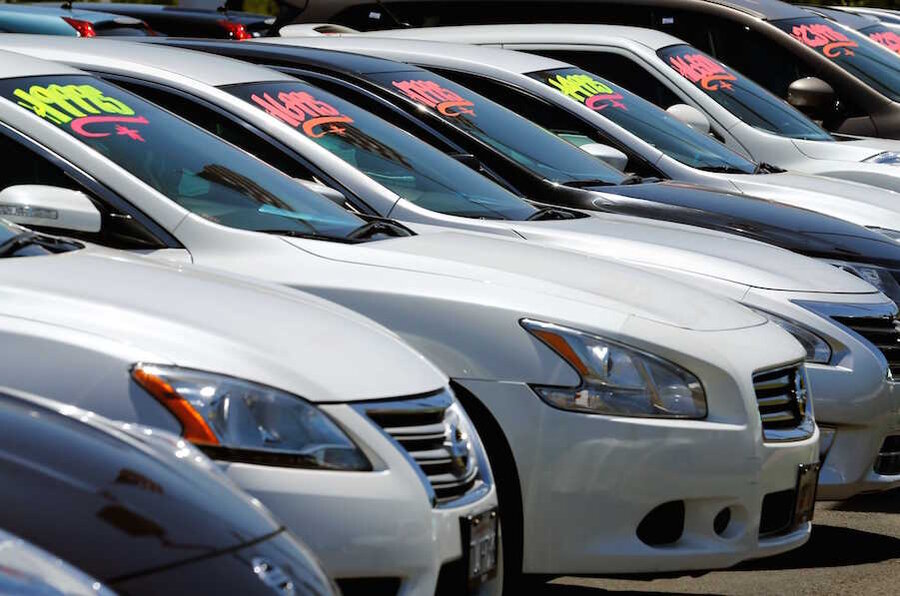Six million borrowers are behind on car payments. Housing bubble redux?
Loading...
More people with poor credit are getting car loans and then missing their loan payments, reported the Federal Reserve Bank of New York on Wednesday. The New York Fed estimated that six million Americans are at least ninety days behind on their car-loan bills.
This is happening at a time when the value of car-loan debt among subprime borrowers – or people with bad credit scores below 620 – last year surpassed a peak reached in 2005, a time known for a debt craze that led to the Great Recession of 2008.
“Even though the balances of subprime loans are somewhat smaller on average [than prime loan balances], the increased level of distress associated with subprime loan delinquencies is of significant concern, and likely to have ongoing consequences for affected households,” the New York Fed economists wrote in a blog post accompanying the report.
While any talk of subprime lending might be worrying because it is redolent of one of the worst recessions in American history, some economists say that we don't appear to be in a crisis situation yet (though we should continue watching for troubling signs).
"On the one side, folks remember the housing subprime crisis and worry about something similar happening in autos," says David Payne, an economist at Kiplinger, a personal finance and business forecasting website. "On the other side, the rise in subprime lending will lead to higher defaults, but the amount seems small." Cars are much cheaper than mortgages, and much easier to repossess and resell than foreclosed homes.
Regardless, Americans both with good credit and bad owe $1.135 trillion to auto lenders. This sum makes up 9 percent of all debt, reports the New York Fed, third in value after student loans (10 percent), and mortgages (68 percent).
But the auto-loan picture is not all bleak. Repayments among people who get car loans from banks and credit unions, which have tightened their lending criteria since the recession, and represent about half of outstanding auto loans, actually improved in the last quarter. “It’s worth noting that the majority of auto loans are still performing well,” the New York Fed points out.
The most troublesome loans, however, are coming from auto financing companies, which mostly loan money through car dealers. They appear to be lending to riskier people who can’t afford to pay back, making a profit off of several years of high interest rates – 24 percent or higher – even on loans that end up in default, Mr. Payne says.
According to some industry analysts, some lenders are lending amounts that are well above car values.
"What we're seeing is in some markets lenders are lending 125 percent on used car values ... which should scare the heck out of everybody," James Chanos, an investment banker who was among the first people to suspect accounting problems at Enron, said at an event in New York this summer, as Business Insider reported.
The New York Fed reported last spring that debt delinquency problems are most severe in oil- and gas-producing counties. Those economies have taken a major blow since the price of oil tanked in 2014, shutting down extraction operations and causing major layoffs. These counties represent less than 2 percent of US workers, however.
In a May report, New York Fed economists write:
Auto loan delinquency rates were very similar in energy-producing counties to the US average between 1999 and 2007. Beginning with the financial crisis, though, the energy counties began to perform persistently better. Since mid-2014, though, energy-county delinquencies have risen sharply in both absolute and relative terms.
Overall, household debt is 2.6 percent below its peak of $12.68 trillion in late 2008, but is about 11 percent above the its lowest point in mid-2013, with auto and student loans leading the growth.
Lenders are also doling out more credit cards and increasing the median limits on how much low-credit-score people can spend. In 2009, the median credit card limit was $500, an amount that doubled to $1,000 by 2015, as The Christian Science Monitor has reported.
The loosening of credit comes at a time when signs point to a growing American economy – featuring strong job and income growth – after years of stagnation. Consumer spending, a large indicator of growth, is on the rise, and it’s helping the economy grow at its fastest rate in a couple of years. Consumer confidence, a measure of people’s perceptions about the state of the economy, soared this month to the highest level since July 2007, before the Great Recession.
“Everything dealing with the consumer seems to be very positive,” Payne told the Monitor earlier this week.









